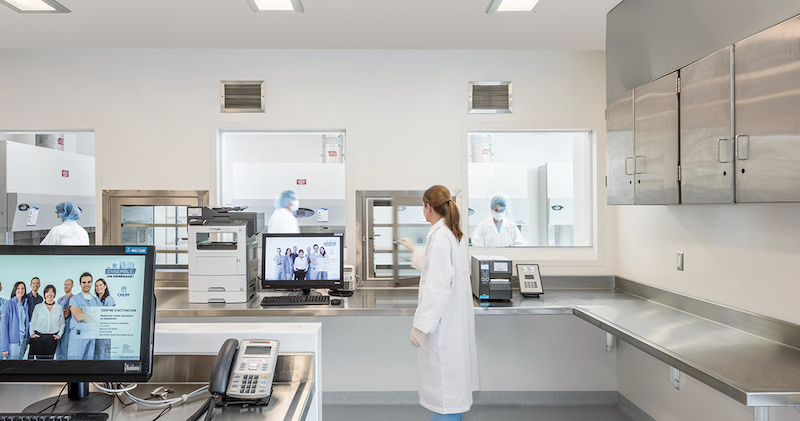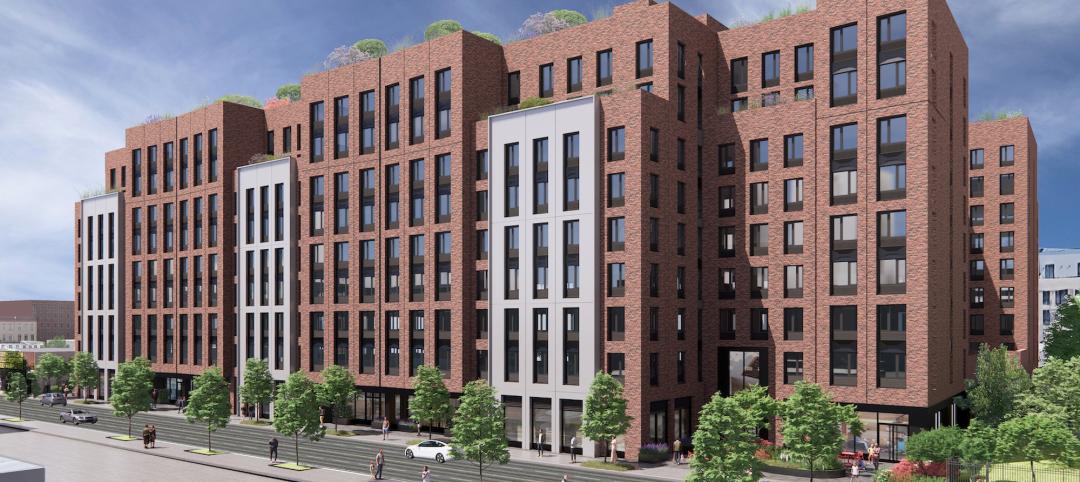Written gratitude does not feel like enough at this moment, but we want to start this piece just by saying THANK YOU to the research teams around the world. You are true heroes in a time when we need you most.
Many of the researchers who work in disease testing, prevention and treatment within the U.S. work at institutions like the Centers for Disease Control (CDC), the National Institutes of Health (NIH), and state-, county- and city-run public health laboratories. The U.S. is fortunate to have some of the best biocontainment laboratories in the world.
For those unfamiliar, biocontainment laboratories are where various pathogenic organisms and agents (i.e., viruses, bacteria or toxins that produce a disease) are held and studied in a highly controlled and isolated environment. A “biosafety level” (BSL) is the level of the biocontainment precautions required to isolate dangerous biological agents in an enclosed laboratory facility. The levels of containment range from the lowest biosafety level 1 (BSL-1) to the highest level 4 (BSL-4). In the U.S., the CDC specifies these levels. BSL-1 and -2 laboratories often house research with low-to-moderate risk, while BSL-3 and -4 laboratories handle pathogens with serious or lethal risk.
To keep researchers safe and performing at their best in the midst of pandemics like COVID-19, these laboratories focus on optimizing three key elements: primary containment, such as personal protective equipment and equipment housing infectious materials; secondary containment, such as the overall quality of the laboratory facility; and a relentless adherence to safe microbiological procedures that align with the design of the laboratory.
Thankfully, specialized biocontainment facilities are designed to support very intricate processes and to reduce the potential for errors and accidents that could jeopardize progress. The following are a few elements you will find in many biocontainment laboratories that allow public health researchers to work effectively, efficiently and safely in times of crisis.
Risk Assessments and Reliable and Redundant Solutions
During a crisis, outbreak, or natural disaster, public health laboratories are critically important to our communities and must remain operational. To ensure that facilities can sustain operations in such an event, risk assessments of the primary building systems and structures are routinely conducted. A good risk assessment includes an evaluation of these systems beyond the first potential mode of failure.
For example, a back-up generator is extremely valuable when there is a loss of power distribution. What if, however, the generator fails or runs out of fuel? The secondary evaluation would include consideration of multiple generators, prioritization of laboratory facility electrical loads and a reliable source of fuel. For one state’s public health laboratory design, we enlisted the support of that state’s National Guard to deliver diesel fuel to the laboratory as a back-up if normal fuel delivery were suspended.
Optimizing Quantity and Quality of Primary and Secondary Containment
Primary containment consists of biosafety cabinets, centrifuges (a machine with a rapidly rotating container that applies centrifugal force to its contents, typically to separate fluids of different densities), and in some cases, personal protective equipment. These elements act as the first line of defense between the infectious materials researchers work with and their own personal safety. It is essential for every laboratory to have an adequate quantity and quality of primary containment equipment to handle routine procedures and to accommodate operation at surge capacity in the event of an outbreak.
The laboratory itself and associated utility systems provide the secondary containment, which contributes significantly to laboratory workers’ protection and safety. A few secondary containment design strategies follow:
Automating Wherever Possible
One way to foster safety and reduce human error in laboratories is to automate processes. Robotics support material washing, high-throughput screening, sample storage and solvent distribution. Another process that has highly effective automated solutions is decontamination. Portable and built-in vaporization systems decontaminate containment suites, thereby supplementing more labor-intensive decontamination processes.
Selecting Appropriate Materials
Finishes for walls, floors and ceilings are critical materials in the design of containment laboratories. All of these finishes must be non-porous to prevent contamination, as well as to promote effective cleaning. This also applies to the numerous devices and fixtures, including fire alarms, monitoring devices, and trim around light fixtures, that come in contact with decontamination vapors and solutions. These critical components are thoroughly evaluated for compatibility with decontamination procedures.
Optimizing Flexibility to Accommodate a Surge
When a public health crisis occurs, having the ability to reconfigure laboratory spaces into the most responsive and effective layout for the task at hand is critical. Laboratory designers plan for flexibility and adaptability by incorporating mobile casework and overhead utilities that are easily rearranged to accommodate new testing equipment, additional benches or biosafety cabinets.
Another important consideration is planning for surges in demand that often accompany a crisis. Laboratories planned for lower-level containment, such as BSL-2 operations, can be designed to operate at a higher BSL-3 level and converted to that higher-hazard operation when necessary. Additionally, training laboratories in public health laboratories can be designed as fully functioning BSL-3 laboratories and converted when necessary.
Again, we want to thank all of the public health professionals working around the clock to keep us safe by developing methods to fight not only COVID-19, but many other diseases impacting public health. Ensuring the health and wellness of researchers working in public health laboratories benefits all of us.
More from Author
CannonDesign | Sep 20, 2024
The growing moral responsibility of designing for shade
Elliot Glassman, AIA, NCARB, LEED AP BD+C, CPHD, Building Performance Leader, CannonDesign, makes the argument for architects to consider better shade solutions through these four strategies.
CannonDesign | Jan 3, 2024
Designing better built environments for a neurodiverse world
For most of human history, design has mostly considered “typical users” who are fully able-bodied without clinical or emotional disabilities. The problem with this approach is that it offers a limited perspective on how space can positively or negatively influence someone based on their physical, mental, and sensory abilities.
CannonDesign | Oct 23, 2023
Former munitions plant reimagined as net-zero federal workplace
The General Services Administration (GSA) has embraced adaptive reuse with Building 48, an exciting workplace project that sets new precedents for how the federal government will approach sustainable design.
CannonDesign | Aug 22, 2023
How boldly uniting divergent disciplines boosts students’ career viability
CannonDesign's Charles Smith and Patricia Bou argue that spaces designed for interdisciplinary learning will help fuel a strong, resilient generation of students in an ever-changing economy.
CannonDesign | Jul 10, 2023
The latest pediatric design solutions for our tiniest patients
Pediatric design leaders Julia Jude and Kristie Alexander share several of CannonDesign's latest pediatric projects.
CannonDesign | May 11, 2023
Let's build toward a circular economy
Eric Corey Freed, Director of Sustainability, CannonDesign, discusses the values of well-designed, regenerative buildings.
CannonDesign | Apr 10, 2023
4 ways designers can help chief heat officers reduce climate change risks
Eric Corey Freed, Director of Sustainability, CannonDesign, shares how established designers and recently-emerged chief heat officers (CHO) can collaborate on solutions for alleviating climate change risks.
CannonDesign | Mar 9, 2023
5 laboratory design choices that accelerate scientific discovery
Stephen Blair, director of CannonDesign's Science & Technology Practice, identifies five important design strategies to make the most out of our research laboratories.
CannonDesign | Feb 9, 2023
3 ways building design can elevate bold thinking and entrepreneurial cultures
Mehrdad Yazdani of CannonDesign shares how the visionary design of a University of Utah building can be applied to other building types.
CannonDesign | Jan 9, 2023
How modular solutions can help address skyrocketing construction costs
Modular builder Joshua Mensinger details three ways modular solutions aid in lowering construction costs.
















